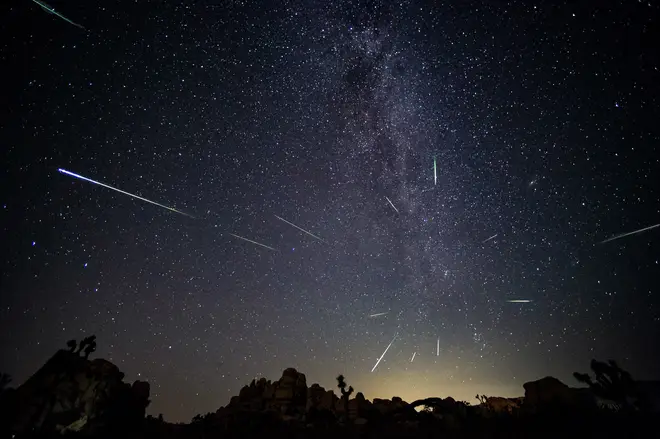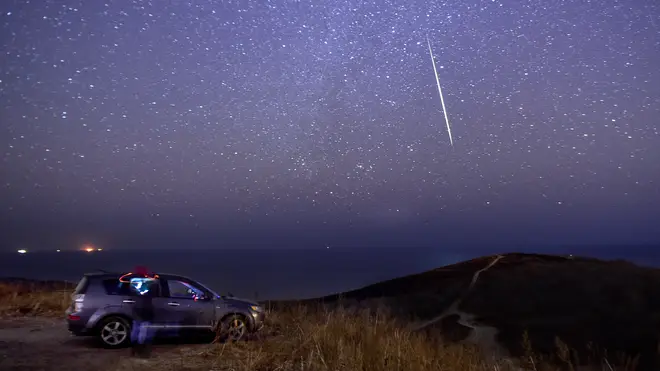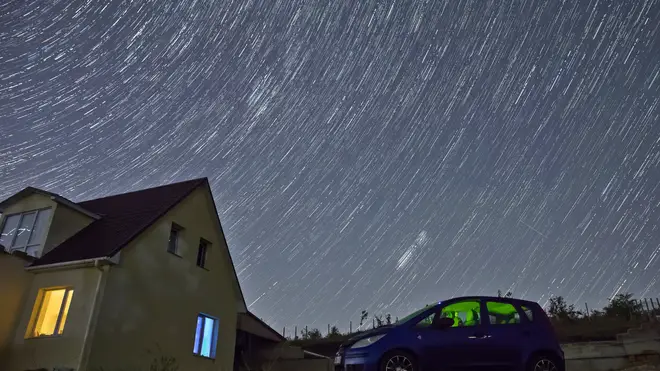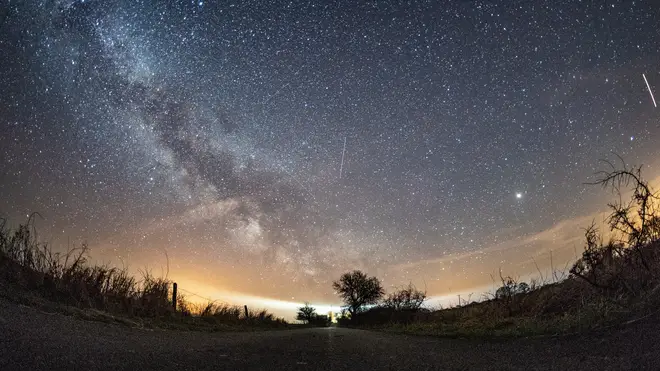
Clive Bull 1am - 4am
20 October 2019, 16:08

The Orionid meteor shower is set to light up UK skies this week with a "substantial increase" of shooting star activity expected to satisfy stargazers this year.
People looking up to the stars this week will be in for a real treat as the Orionids are expected to cause some celestial fireworks whilst Earth passes through the debris of Halley's Comet.
The Orionid meteor shower takes place throughout October but is expected to peak this week, with 11:30pm Monday evening said to be the best time to view the dazzling display in the UK.
Unsurprisingly, the phenomenon gets its name from the Orion constellation, which is one of the brightest groups of stars in the sky.
With the Met Office predicting clear skies and dry weather for Monday evening, it is thought most skygazers will get a good view this year with roughly 20 or so meteors expected every hour.

The International Meteor Organisation describe the Orionids as "a medium strength shower that sometimes reaches high strength activity."
However, it added: "We look for a substantial increase this year!"
The Orionids take place late in October and sometimes into early November and are the most prolific meteor shower associated with Halley's Comet.
They appear to come from the Orion constellation, thus the name, but they are caused by the Earth moving into material left behind by the comet 1P/Halley’s tail.
As Halley's Comet orbits the sun and the Earth intercepts its dusty trail, it produces an outburst of meteors in the planet's atmosphere that are sometimes just as small as grains of sand.
These meteoroids from Halley's Comet strike the Earth's atmosphere at a speed of 148,000mph, creating the dramatic shower that is visible with the naked eye.

Most people across the UK will get a good chance to spot the celestial fireworks this week, so long as Met Office predictions about the weather are correct.
Anna Ross, an astronomer at the Royal Observatory Greenwich, said: "Meteors will be visible all over the sky but they will appear to originate from close to the star Betelgeuse in the constellation of Orion, which will be in the east of the sky during that peak time."
The Orionids will be visible in night skies from now until early November, however the best time to catch them in the UK is expected to be around 11:30pm on Monday 21 October.
With clear skies expected tomorrow evening, it is hoped the phenomenon will be clear for all to see at that time however the IMO stated it is "difficult to predict just how densely populated the meteoroids" will be.

They will be visible with the naked eye, however Ms Ross from the ROG explained the best way to get a glimpse of them.
She said: "For the best chances to spot the Orionids, find a dark area of clear sky and allow around 20 minutes to let your eyes adapt to the dark.
"It may also be advisable to lie down as you will be looking up for a long time."
According to the IMO, "rates have been low during the first half of the 2010s" and so it is hoped that "activity will be on the increase the next few years."
In 2017 there were an average 30 an hour and in 2018 it was about 22 per hour (albeit with a full moon which acts to hide some of the display).
This year we can expect around 20 meteors an hour at peak times with nearly five per hour during the last few hours before dawn.
The Orionids happen at the same time each year, roughly during the last week of October and therefore should occur at the same time in 2020.
Others to look forward to are the Geminids in December and the Quadrantids in January 2020.